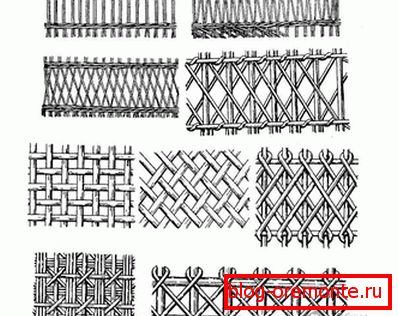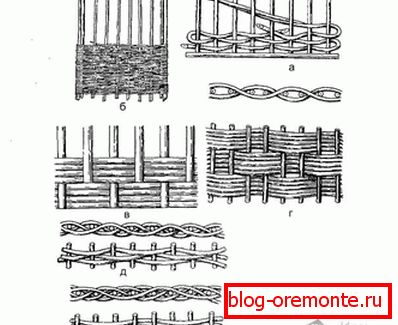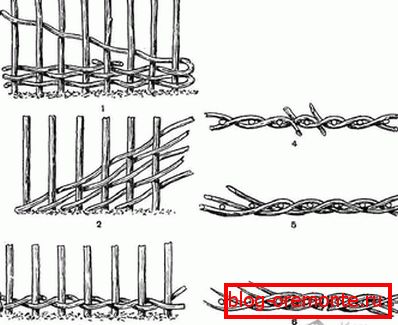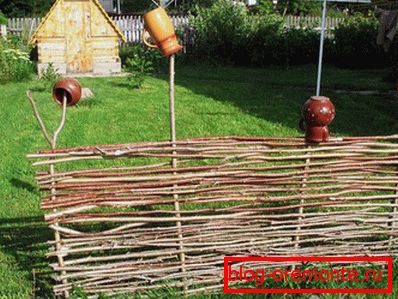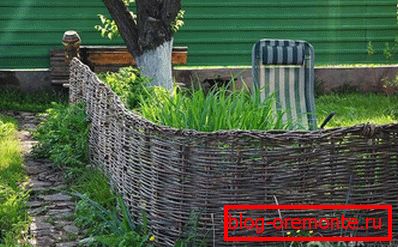How to make a wicker fence
If you are tired of the usual grid-chain-link, which serves as a fence for your land, attach a little imagination, zeal and ... make an original wicker fence. To master the basic principles of its creation, it takes not so much time, because the main “problem” that usually confuses those who are thinking how to make a wicker fence is finding the material for its manufacture.
What make a wicker fence

Wicker fence should be created from flexible branches (for example, from hazel or willow). They should be cut in late autumn, when the leaves of the trees have already been dropped, but the movement of sap in them has not yet ceased. “On the hunt” should go out with a pre-prepared “yardstick” (a branch that has the length you need can play in its role), and cut only those branches that fit you in size.
In addition to flexible branches for a wicker fence, you will also need branches that are thicker, but also necessarily straight, which will serve as supports in the fence. The thickness of the branches-supports should not be less than 4 centimeters, and the length - is equal to the height of the fence plus 50-55 centimeters (it is at this depth you will hammer them into the ground).
Types of weaving
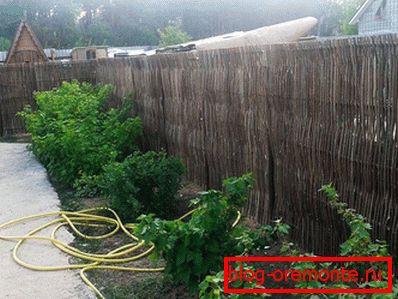
Since you can make a wicker fence in several ways, you should talk about them in more detail:
- Vertical weaving - for such a fence, the supports should be fixed both vertically (pillars) and horizontally (the basis for weaving the fence). With this type of weaving, the length of the bent branches should be only 15-20 centimeters more than the final height of the fence.
- Horizontal weaving is a more familiar method of weaving, in which long flexible branches (at least 2 meters long) are horizontally placed between vertical supports. In this case, the pitch of the supports should not be less than 30 centimeters (otherwise it will be difficult for you to bend the branches).
- Oblique weaving is another way to create a woven fence, in which between the often located supports some branches are woven diagonally:
Making a fence
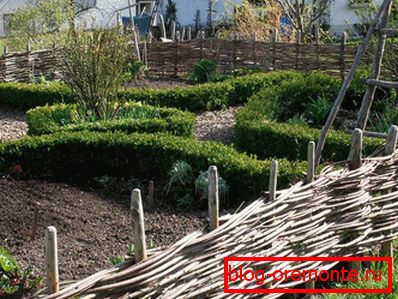
 Creating a woven fence, regardless of the type of weaving used, should begin with the installation of supports. The branches serving this purpose are not buried in the ground, but driven to a depth of at least 50 centimeters (otherwise the fence may tip over under gusts of wind). When hammering branches, do not forget to check their verticality, otherwise the fence will turn out to be crooked and ugly.
Creating a woven fence, regardless of the type of weaving used, should begin with the installation of supports. The branches serving this purpose are not buried in the ground, but driven to a depth of at least 50 centimeters (otherwise the fence may tip over under gusts of wind). When hammering branches, do not forget to check their verticality, otherwise the fence will turn out to be crooked and ugly.
The next stage is the fence itself. Since the branches are not connected with supports, then if you do not get a beautiful result on the first attempt, you can disassemble it and try again. Fences in which the branches are arranged in staggered order not one by one, but two or three, look originally.
Docking branches along the length can be one of two ways:
- Breaking the entire fence into "sections", that is, you will make a clear boundary separating all the branches (from the bottom to the top of the fence) to the left and right. Such a boundary should fall on the gap between the branches-supports of the fence.
- Complementing each ended branch with another, without focusing on this moment. With this method of weaving, it is better to fasten the branches at the junction with thin wire to create the illusion of an “endless” line.
All joints should not be located in the same place, but should be evenly distributed along the entire length of the fence.
Pros and cons of wicker fence
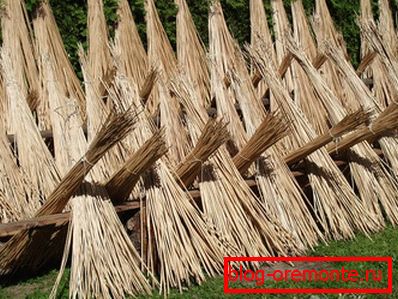
Choosing for themselves the option with a woven fence, as its undoubted merits note:
- environmental friendliness - only natural materials are used,
- originality and singularity,
- the ability to give the fence a curved shape,
- ease of assembly,
- no need to concrete support or pour the strip foundation under the fence,
- its height depends only on the desire of its creator.
But the wicker fence from the branches has drawbacks:
- it's not very durable
- combustible
- branches 3-4 years later in the ground will rot,
- only suitable for land in a rustic style.
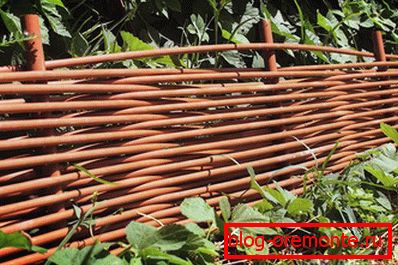
Alternatively, instead of a wicker fence from the branches, you can install on its site a plastic imitation.
Such a PVC fence, having the appearance of a conventional wicker fence of branches:
- first, it will serve much longer than its natural counterpart;
- secondly, it can be disassembled and rearranged to another place;
- thirdly, it has an even upper and side framing, which gives it a more presentable appearance than a simple wicker fence.
Video
And here you will see how to make a fence using the technique of vertical weaving:
A photo
